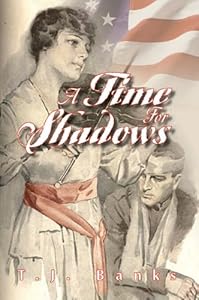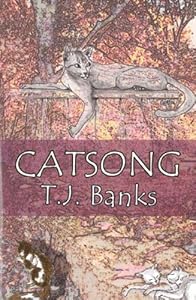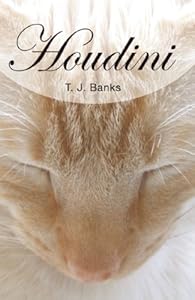Can you tell us a little bit about your latest book? When did it come out? Where can we get it?
 My latest book, Sketch People: Stories Along the
Way (Inspiring Voices/Guideposts 2012), is a series of interviews or
"conversations" with people about what they do and why it matters to
them. There are a few exceptions to this particular "rule":
"The Message," for instance, is included simply because it's a
powerful story about bonds that transcend death. But most of the stories are
about people pursuing their callings. There's this saying -- "Follow
your heart, and everything else will fall into place." Well, I'd say
that my interviewees are doing just that and then some. They're doing
things they feel called upon to do, regardless of whether everything else has
fallen into place. Actors, writers, activists -- they're all doing
work they believe in.
My latest book, Sketch People: Stories Along the
Way (Inspiring Voices/Guideposts 2012), is a series of interviews or
"conversations" with people about what they do and why it matters to
them. There are a few exceptions to this particular "rule":
"The Message," for instance, is included simply because it's a
powerful story about bonds that transcend death. But most of the stories are
about people pursuing their callings. There's this saying -- "Follow
your heart, and everything else will fall into place." Well, I'd say
that my interviewees are doing just that and then some. They're doing
things they feel called upon to do, regardless of whether everything else has
fallen into place. Actors, writers, activists -- they're all doing
work they believe in.
Sketch People can
be purchased directly from me (e-mail me at dawntreader27@earthlink.net), bookstore.inspiringvoices.com, amazon.com,
and barnesandnoble.com.
Is there anything that prompted your latest book? Something that
inspired you?
I had just finished working on A Time for Shadows, a World War
I novel that had taken me six-and-a-half years to write. I
needed to switch gears and work on something completely different. I
found myself turning back to journalism...which was, after all, where I'd
started out as a writer. I'd always loved interviewing people and finding
out what made them tick. So, I thought, why not do a blog that allowed me
to do just that? That was the beginning of my "Sketch People"
blog (http://www.tjbanks927.blogspot.com), which
eventually turned into the book of the same name.
Great! So, when did you know you wanted to write? Or
has it always been a pastime of yours?
Since I was eight-years-old. I'm not exactly sure how
it came about, only that one day, I went from reading stories to writing them,
complete with illustrations. By the time I was nine, I was making off
with the tan copy books we practiced our penmanship in. My best friend
and I used them for all our stories and poems. We'd grab a stuffed animal
or a model horse from the shelf and just commence writing about it.
And when we weren't able to get together, one of us would call the other,
and we'd make up stories over the phone.
Do you have any favorite authors?
I'm very partial to British novelist Elizabeth Goudge (1900
- 1984): her books are both spiritual and grounded, and I find myself
turning to her work when I'm at loose ends. Other favorites include Joyce
Stranger, who wrote such vivid stories of people and their animals in the
British and Welsh countryside, and Deric Longden. I love Longden's quirky
sense of humor. And I like getting lost in a good historical novel, so
Margaret Campbell Barnes and Janet Holt Giles are also on my list.
Do you write in a specific place? Time of day?
There's a little room off our kitchen that I use as a study,
and, yes, I do a lot of my writing there. But years ago, I learned to
write just about anywhere -- sitting on the steps, waiting for the
commuter bus; under the dryer at the hairdresser's; and at this Italian bakery
while my son was at religious school. As long as I have my portfolio and
pen -- I like to write out my rough drafts in long-hand -- I'm good.
I prefer to get started on my writing as soon as I
come in from my morning run. It doesn't always work out that way, of
course. But that doesn't stop me from trying.
Are there any words you'd like to impart
to fellow writers. Any advice?
Write what engages you. Now, I know that sometimes --
a lot of times -- we're locked into the dishwater-dull writing assignments or
projects. But whenever possible, we need to write about what matters to
us. There's this Edith Wharton character who talks about artists needing
to feed their work with their own entrails. Well, that's about the size
of it. If you write something that you don't care about, your readers
will know -- they're not stupid -- and if you don't care about it, why
should they?
But I'm not talking just about the readers here. A
novel...a screenplay...a collection of poetry...all these things require a
tremendous amount of work if you're going to do them right. Why would you
expend that much time and energy on something you didn't love?
Here is the blurb for Sketch People: Stories Along the
Way.
We
all have stories to tell. Sketch People is a collection of stories about
people—their work, their passions, and their experiences. In this compilation
by T. J. Banks, a woman tells the story of a message she received from an old
family friend following the death of her late mother’s dog. Another woman, a
cancer survivor, recounts her long and complex journey from geologist to master
gardener to environmental and safety engineer to goat’s-milk soap maker. An
actor and playwright talks about the inner workings of his craft, while actress
Tippi Hedren reflects not on her film career but on her work with the wild cats
of the Shambala refuge in Acton, California. The collection also includes an
affectionate tribute to the late writer and activist Cleveland Amory, who more
than lived up to his personal philosophy of “simply to be kind.” Each sketch
brings us a little closer to understanding how these particular folks got where
they were going and what transformed them along the way— each person has a
spark, a tale worth telling.
“T. J. Banks offers interesting ‘sketches’ of
writers, artists, photographers and others in Sketch People, highlighting
passions, ideologies and historical accounts of each person’s true story in her
impacting and emotionally driven style.” —Patricia Spork, Sporkette Gazette
Here is an excerpt from Sketch People: Stories Along the
Way.
She
likes to start on the eyes as soon as possible in her portraits, artist Sally
Logue explains. “It’s important to get them right. I usually start with a rough
outline of the head and then work from the eyes outwards. You’d be taught to
work from top left to bottom, gradually building up color and tone, but I like
the eyes to bring the portrait to life early on.” They really are “the windows
to the soul,” she says, and they speak to her.
They speak to the viewer, too. The animals and birds in Logue’s portraits draw us in with their eyes. A wistful Blue-cream Point Siamese…an elfin Ruddy Abyssinian…an inquisitive Springer Spaniel…two British Giant rabbits looking like they’re chatting companionably over a lettuce lunch…all of them are vivid presences, seemingly ready to step off the pastel paper and become fully dimensional. Logue has a strong rapport with her subjects, and it shows in every pastel-penciled line. The word that keeps coming up in her customers’ comments is “captured,” and they’re not always talking about a physical likeness. More often than not, their remarks have to do with intangibles: “you captured their spirit,” “ you've managed to capture so much about them…it really does look as if you know Simon and Barney well,” or “her character is captured totally.” Some folks even admit to crying upon receiving a portrait of a deceased pet. “I don’t feel like I’m looking at a portrait and it really brings it home that he is no longer with us,” one customer wrote.
-- From "Soul-Catcher: Sally Logue," Sketch People: Stories Along the Way
Talking with actor and writer Jay Amari is a whole lot like looking down a kaleidoscope. A turn of the tube or the conversation and the configurations of color and light tumble apart, shift, and re-form themselves. Twirl it again, and yet another pattern emerges.
What does remain clear and constant, however, is Amari’s intense level of creative energy. He is the author of Crosstown Traffic, a collection of plays: two of them – “Cloudy All Day” and “The Greatest” – were finalists in the Actors Theatre of Louisville National Ten-Minute Play Series in 1992 and 1993. He has taught writing workshops at Columbia University. He has acted in film and on T.V., his most recent work being in “Manalive,” a film based on the 1912 G. K. Chesterton novel. And he’s working on several screenplays plus a story, which has been appearing in installments on Facebook.
So, a Renaissance man? Amari laughs. "I guess I am because I'm working on a self-produced film, shot on video, which is probably going to be different from any other kind of movie that anybody else has made." That movie, "My Day," basically covers "parts of a day, only it's going to be four seasons, so there'll be summer, winter, spring, and fall. The film itself is going to be interspersed with archival footage from other films, which will add commentary to my daily activities." He'll also be weaving in a number of one-minute segments in which people tell him in a single sentence what their days are like. He has, he adds, scripted about 40 pages of it, "but now what I'm finding is, just the process of shooting is showing me all this other stuff that is available. [So it] has sort of become this process-oriented film. But I'm going to be very happy with it when I finally get it finished because you're gonna see a lot of growth in it. Documentary-like, but it's still a fiction film."
-- From "A One-Man Show: Jay Amari," Sketch People: Stories Along the Way
Author Bio
 T. J. Banks is the author of Sketch People: Stories Along the Way, A Time for Shadows, Catsong, Derv & Co.: A Life Among Felines, Souleiado, and
Houdini, a cat novel which the late writer and activist Cleveland Amory
enthusiastically branded “a winner.” Catsong,
a collection of her best cat stories, was the winner of the 2007
Merial Human-Animal Bond Award. A Contributing Editor to laJoie, she has received writing awards from the Cat Writers’
Association (CWA, ByLine, and The Writing Self. Her
work has appeared in numerous anthologies, including Guideposts’ Soul Menders, Their Mysterious Ways, Miracles of Healing, and Comfort
From Beyond. She has also worked as
a stringer for the Associated Press and as an instructor for the Writer’s Digest School.
T. J. Banks is the author of Sketch People: Stories Along the Way, A Time for Shadows, Catsong, Derv & Co.: A Life Among Felines, Souleiado, and
Houdini, a cat novel which the late writer and activist Cleveland Amory
enthusiastically branded “a winner.” Catsong,
a collection of her best cat stories, was the winner of the 2007
Merial Human-Animal Bond Award. A Contributing Editor to laJoie, she has received writing awards from the Cat Writers’
Association (CWA, ByLine, and The Writing Self. Her
work has appeared in numerous anthologies, including Guideposts’ Soul Menders, Their Mysterious Ways, Miracles of Healing, and Comfort
From Beyond. She has also worked as
a stringer for the Associated Press and as an instructor for the Writer’s Digest School.
Twitter: https://twitter.com/Tjbanks27
Amazon Author Central: http://www.amazon.com/T.-J.-Banks/e/B001KHC62M/ref=sr_ntt_srch_lnk_1?qid=1369025849&sr=1-1






Interesting interview Marie. It's nice to meet you T.J. I agree with you about writing about things we care about. That was a lovely excerpt from your novel.
ReplyDeleteThanks, Evelyn, and it's good to meet you, too. I gained so much from talking to my Sketch People -- their stories were so rich, they pretty much told themselves.
ReplyDeleteI have to admit T.J. made me want to buy the book. LOL.
ReplyDelete